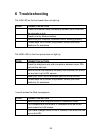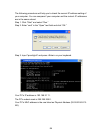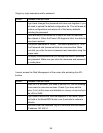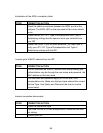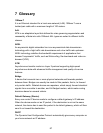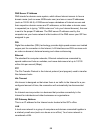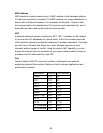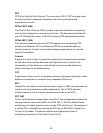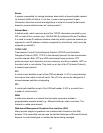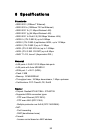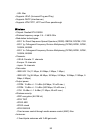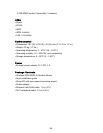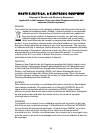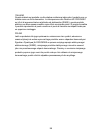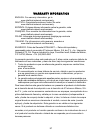91
Router
A system responsible for making decisions about which of several paths network
(or Internet) traffic will follow. To do this, it uses a routing protocol to gain
information about the network and algorithms in order to choose the best route
based on several criteria known as “routing metrics.”
Subnet Mask
A subnet mask, which may be a part of the TCP/IP information provided by your
ISP, is a set of four numbers (e.g., 255.255.255.0) configured like an IP address.
It is used to create IP address numbers used only within a particular network (as
opposed to valid IP address numbers recognized by the Internet, which must be
assigned by InterNIC).
TCP/IP, UDP
Transmission Control Protocol/Internet Protocol (TCP/IP) and Unreliable
Datagram Protocol (UDP). TCP/IP is the standard protocol for data transmission
over the Internet. Both TCP and UDP are transport layer protocols. TCP
performs proper error detection and error recovery, and thus is reliable. UDP, on
the other hand, is not reliable. They both run on top of the IP (Internet Protocol),
a network layer protocol.
VCI
A virtual circuit identifier is part of the ATM cell header. A VCI is a tag indicating
the channel over which a cell will travel. The VCI of a cell can be changed as it
moves between switches via signaling.
VPI
A virtual path identifier is part of the ATM cell header. A VPI is a conduit for a
number of virtual circuits.
WAN
A wide area network is a network that connects computers located in
geographically separate areas (e.g., different buildings, cities, countries). The
Internet is a wide area network.
Web-based Management Graphical User Interface (GUI)
Many devices support a graphical user interface that is based on the Web
browser. This means the user can use the familiar Netscape or Microsoft Internet
Explorer to control/configure or monitor the device being managed.



